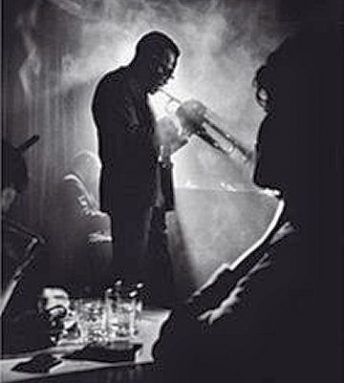Music in the brain
Scientists have uncovered a pattern of brain activity that may tune up musical improvisation.
By Emily Sohn
Music inspires many people, including scientists. For instance, two researchers recently looked at the brains of jazz musicians. They were interested in what happened when musical performers spontaneously invent musical passages. Making up music is known as improvisation. It’s quite different from performing the notes written on a page, which is what most non-jazz performers do.
Six professional jazz pianists agreed to have their heads scanned by a team of researchers from Johns Hopkins Hospital in Baltimore and the National Institute on Deafness and Other Communication Disorders in Bethesda, Md. The musicians laid inside a large, tube-shaped machine called a functional magnetic resonance imaging (fMRI) device. The machine records blood flow. So when someone inside of it does or thinks about something, scientists can see which parts of the brain are working hardest.
 |
|
This is a 1958 photo of the legendary jazz trumpeter Miles Davis. Jazz musicians improvise, which means they make up what they play as they go along. Every time they play the same song, it will include the same musical themes. However, every performance will sound somewhat different.
|
| Wikipedia |
Inside the fMRI device, the musicians propped a plastic piano keyboard on their laps. In one exercise, they played the notes of a scale in order. Then, they used the same notes to improvise a song.
In another exercise, the musicians memorized a jazz composition and then played it while lying in the fMRI device. As they played, they listened to a recording of other instruments playing the accompanying parts. Then, the musicians improvised while listening to the same background music.
Results from both exercises showed that the brain behaved in a particular way during improvisation. There was extra activity in a part of the brain that has been linked with the ability to tell a story about yourself. At the same time, there was less activity in the part of the brain that has been linked to planning and controlling behavior. Both parts are located near the front of the brain.
“What we think is happening is that when you’re telling your own musical story, you’re shutting down [brain cell] impulses that might impede the flow of novel ideas,” says Charles J. Limb, one of the researchers. He is a trained jazz saxophonist himself.
Improvisation is an important skill in creative pursuits. So next, the researchers plan to look for similar activity in the brains of poets, painters, and other artists.
Going Deeper:
Bower, Bruce. 2008. Riff riders: Brain scans tune in to jazz improvisers. Science News 173(March 8):148-149. Available at http://www.sciencenews.org/articles/20080308/fob4.asp .
Sohn, Emily. 2004. Project music. Science News for Kids (June 2). Available at http://www.sciencenewsforkids.org/articles/20040602/Feature1.asp .







